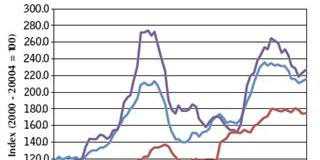
Technology can be highly seductive, as any parent of a teenager will know. It is very easy to get so involved with technology that you neglect the other important aspects of managing a farm business, when it comes to choosing farming equipment.
READ: Designing-a-foolproof-safety-system–Part-1
Too much new technology in farming equipment
New technological development usually follows what is known as the Gartner hype cycle. First, there is the trigger – the announcement of some new advance. Then there’s the hype, leading to inflated expectations about the benefits of the technology. This is followed by a period of disillusionment, when it becomes clear that the claims were vastly exaggerated.
As practical ways of implementing the technology become clear and second- and third-generation products appear, users begin to understand and apply the technology properly. This is followed by a plateau of productivity when the technology becomes generally accepted and starts to pay off.
Precision crop farming technology and the use of GM seed have probably reached this stage. Both enable farmers to produce more efficiently.
A USDA study shows savings of about R740/ha are common where yield mapping and the variable application of fertiliser and seed (variable rate technology) are used. Similar savings are found with precision feeding in intensive and pasture-based dairy herds.
Applying technology optimally
Two types of technology are used in agriculture – scale-neutral and scale-dependent. The first can be employed irrespective of the size of the farming operation. GM maize seed, for example, can be used by both the small-scale and larger farmer.
Indeed, the small-scale farmer who does not possess all the necessary equipment or management skills will probably do better with GM seed than without. Precision farming technology is not scale-neutral. The operation must be large enough to afford the capital equipment needed to apply it. This is one of the factors driving the movement towards larger farms.
Modern technologies can also create friendlier working environments, such as the air-conditioned cab of a modern combine harvester. The trick is not to get bogged down in all of this. Capital expenditure should be evaluated not only in terms of efficiency and profitability, but affordability.
This involves more than luxury or unnecessary features; it involves factors such as staff training. For example, with new technology, farm workers are no longer manual labourers. They are now technicians in control of highly expensive equipment. Failing to operate this efficiently can result in costly mistakes.
Therefore proper worker training becomes more important than ever – and an additional cost!
Difficult decisions
All the technology in the world cannot get around the fact that most crop and livestock farmers produce commodities, then leave the marketing of these in the hands of others.
Maize farmers, for example, produce maize very efficiently, then deliver it to the nearest silo at whatever price rules at the time. Intensive livestock farmers buy this maize at the prevailing price. The only ones who truly benefit are the silo owners.
I once asked a grain farmer why this happens. He reminded me that a large portion of the summer-grain crop is no longer the property of the farmer when it’s delivered. Production credit keeps the grain production system going, but it limits farmers’ ability to choose where and when to buy inputs such as fertiliser.
Perhaps more importantly, it limits farmers’ ability to choose ways of marketing products. Those able to market their products directly to grain users can create value for both.
In short, modern technologies can help producers farm more efficiently. Yet if it is too expensive or unsuitable, it can cause more problems than it is meant to solve. Choosing the right level of technology for a farm is crucial.
This article was originally published in the 08 July 2016 issue of Farmers Weekly.





